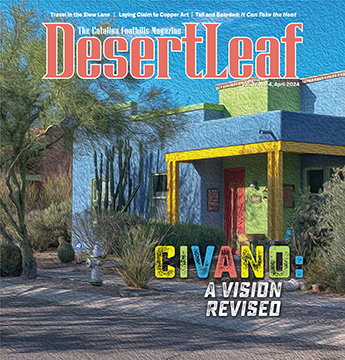Story and Photography by Karen Wright
How can anyone resist the showiness of irises blooming in the spring? With a wide array of colors and characteristics, these aptly named perennials — whose name is derived from the Greek word for “rainbow” — have captured the hearts of many gardeners.
Growing irises has become a passion for many. Since 1965, the nonprofit Tucson Area Iris Society (TAIS) has provided guidance and information to Tucsonans about how to grow these beauties. Under the parent organization of the American Iris Society, TAIS offers rhizomes for sale in the fall and a show of members’ best plants in the spring.
Although the iris is not native to Southern Arizona, several varieties of the flowering plant thrive here, especially the tall bearded irises. They can take the heat, don’t need a lot of water, and prefer the mild winters. One variety native to Northern Arizona is the Rocky Mountain iris, a petite bloomer that peaks in June and looks similar to the Dutch iris.
Most iris plants spread through underground stems called rhizomes. To reduce overcrowding and increase blooming, larger clumps of iris should be divided, lending an opportunity for the gardener to expand the garden or share the bounty with friends.
Continue reading this article from Desert Leaf
All images & content for this article provided by Desert Leaf and their respective owners


 Image by: Desert Leaf
Image by: Desert Leaf